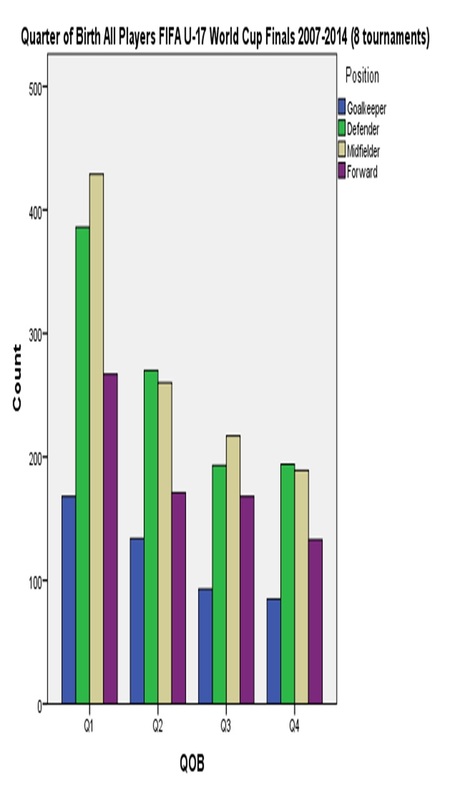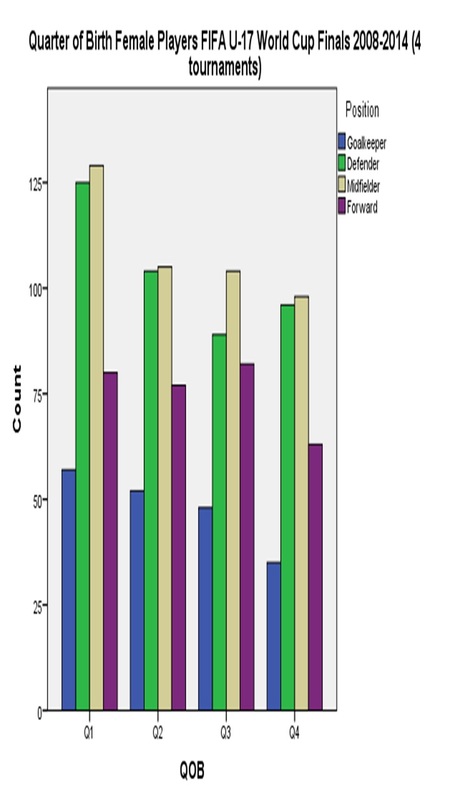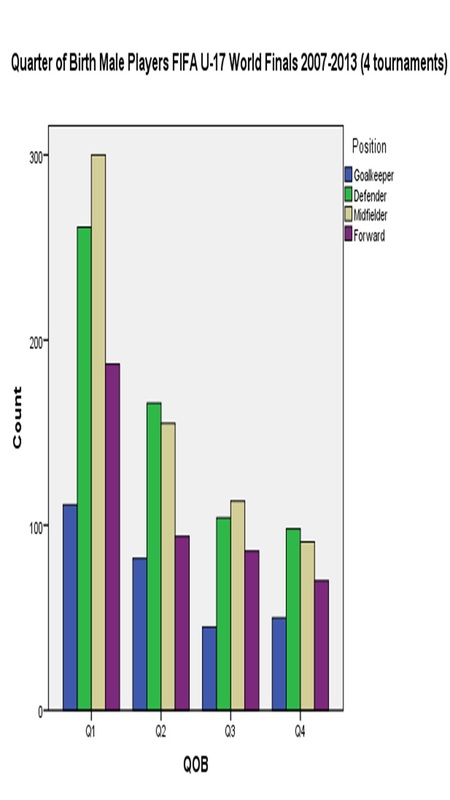In football this physiological difference may be more beneficial in different positions. For example, goalkeepers tend to be taller than outfield players, and defenders also tend to be taller and bigger than midfielders and attackers (we can of course think of many midfielders and attackers that are tall and big).
The graphs below show the breakdown of quarter of birth for elite under-17 footballers - i.e. those representing their countries at FIFA U-17 World Cup Finals between 2007 and 2014. There are four tournaments each for male and female players over the period. The data comes from FIFA and player position is designated on the website for each tournament.
The figures show, from the flatter distribution of the female players, that relative age effects are far more pronounced for males than for females.



 RSS Feed
RSS Feed